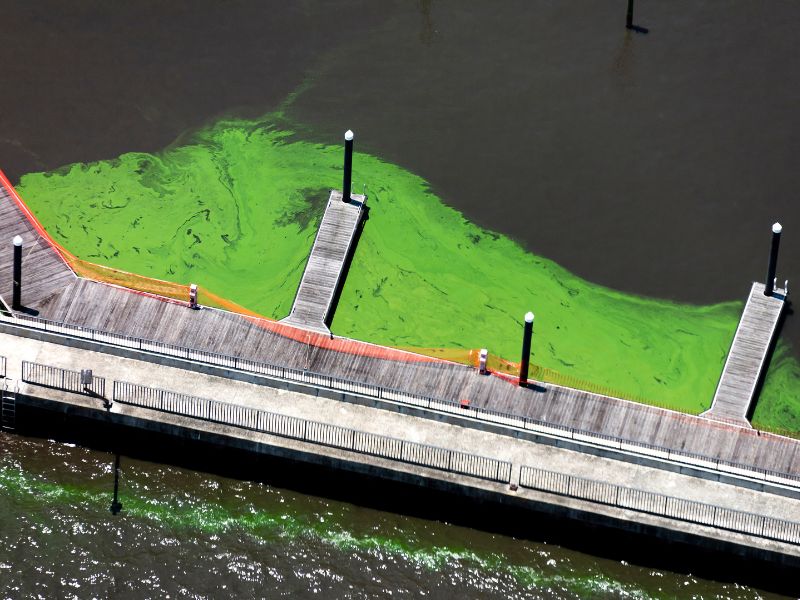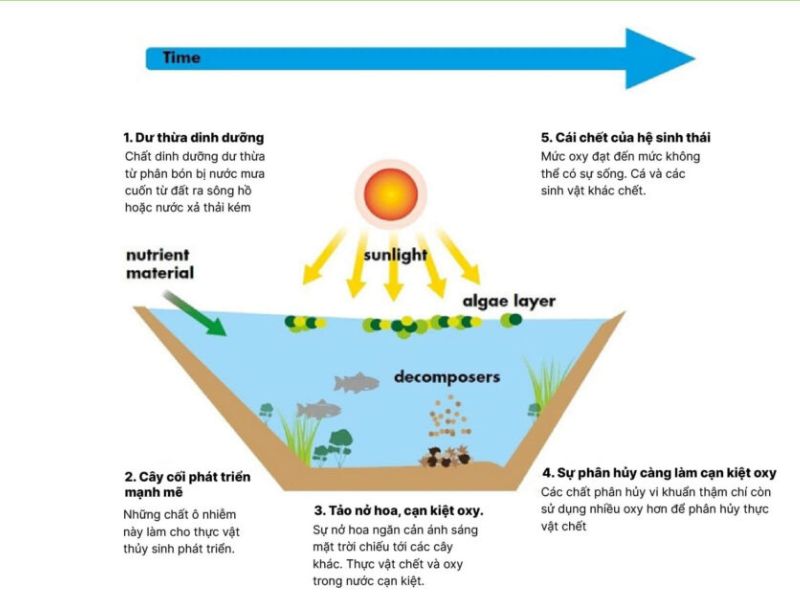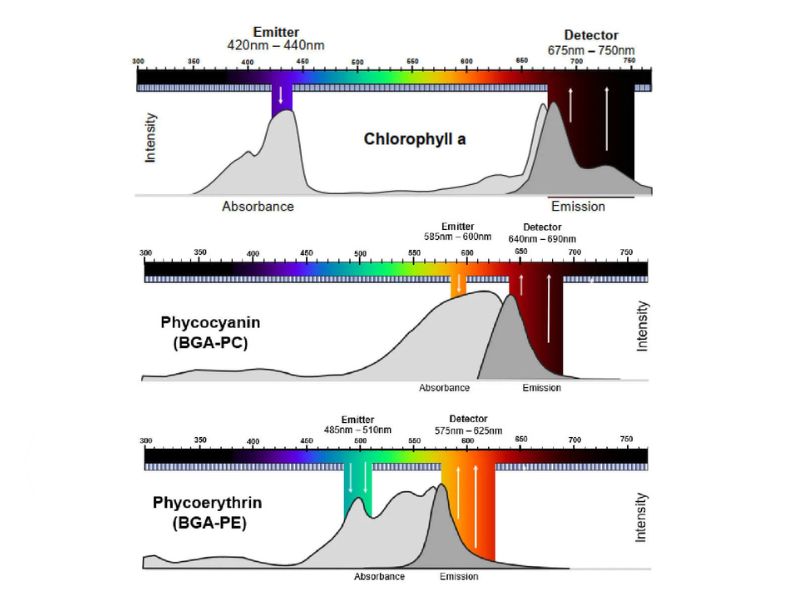Monitoring harmful algae, such as Chlorophyll a and cyanobacteria (Phycocyanin BGA-PC), is crucial for reservoirs and raw water sources to ensure water quality. This monitoring process helps prevent the growth of harmful algae, which are the primary cause of unpleasant odors and taste in water and may release toxins that are challenging to treat when algae blooms occur. Moreover, monitoring algae supports water treatment plants in optimizing production processes, building public trust in the safety of drinking water supplies.
What Are Chlorophyll a Algae and Cyanobacteria (Phycocyanin BGA-PC)?
Algae are a diverse group of autotrophic organisms, either single-celled or multicellular, with a simple structure, commonly found in natural water environments such as rivers, streams, ponds, and lakes. Algae contain chlorophyll (Chlorophyll a) and display a range of colors. When water becomes rich in nutrients, “algal blooms” can occur, forming dense mats on the water surface, which may be blown into bays or along shorelines, reducing dissolved oxygen and negatively impacting aquatic ecosystems.
As algae grow through photosynthesis, they proliferate, potentially leading to algal blooms that harm the aquatic environment, disrupt ecosystems, and impair water quality.
Why Monitor Chlorophyll a Algae and Cyanobacteria (Phycocyanin BGA-PC)?
Chlorophyll a algae and cyanobacteria (Phycocyanin BGA-PC) can release trace organic compounds into the water environment, causing pollution and degrading the ecosystem. Cyanobacteria can produce toxins that pose health risks to humans and animals when contaminated water is consumed. These toxins can lead to health issues such as allergies, skin irritation, and more severe complications if ingested.
One of the most harmful types of cyanobacteria is Planktothrix rubescens, known for producing the dangerous toxin microcystin. This bacterium is a primary cause of toxic algal blooms in many freshwater areas worldwide, including lakes, rivers, and occasionally drinking water sources. The World Health Organization (WHO) recommends that cyanotoxins from cyanobacteria in drinking water be kept below 1 µg/L to ensure public health safety.
=> Reference: Methods for Detecting Cyanobacteria in Aquaculture
Algae Monitoring Solution with the Aqua Troll 500
For effective monitoring of algae indicators in water, the Aqua Troll 500 multiparameter water quality monitoring device is a top choice, offering detection of Chlorophyll a, Phycocyanin (BGA-PC), and Phycoerythrin (BGA-PE). The Aqua Troll Multiparameter Sonde utilizes three sensors to measure these indicators:
- Chlorophyll a: The primary photosynthetic pigment found in all algae species, including green algae, brown algae, and cyanobacteria (blue-green algae). Measuring Chlorophyll a is a standard method for assessing overall algae density in water, providing insights into nutrient levels.
- Phycocyanin BGA-PC: A blue-green pigment in cyanobacteria that helps them absorb light for photosynthesis. In water quality research and monitoring, Phycocyanin BGA-PC is used to determine cyanobacteria levels, particularly in freshwater systems.
- Phycoerythrin (BGA-PE): An orange-red pigment found in certain algae species, such as red algae and some cyanobacteria. Monitoring this indicator aids in detecting non-cyanobacterial algae diversity.
=> See also: Water Quality Monitoring Solutions at Reecotech
How the Aqua Troll 500 Works
The Aqua Troll 500 measures algae indicators using light absorption and emission principles. Each compound or particle in the water absorbs and emits light at specific wavelengths (390 – 750 nm). Algae concentrations are calculated based on the light absorbed and emitted by chlorophyll compounds in the water. As algae concentrations rise, the emitted light intensity also increases, allowing the device to assess algae growth levels.
The Relative Fluorescence Unit (RFU) is used to determine algae density, ranging from 0 (no fluorescence) to 100 (maximum fluorescence), providing an estimate of total algal biomass. Although cyanobacteria (BGA-PC) contain chlorophyll, their cellular structure prevents standard optical fluorescence, making it difficult for Chlorophyll a sensors to detect cyanobacterial blooms. Therefore, monitoring both Chlorophyll a and BGA-PC is essential for a comprehensive understanding of algae contamination in water.
Aqua Troll 500 – An Effective Monitoring Solution for Water Plants
The Aqua Troll 500 by IN-SITU is a high-quality water monitoring device that enables water treatment plants to monitor three key indicators—Chlorophyll a, Phycocyanin (BGA-PC), and Phycoerythrin (BGA-PE)—in one device with integrated sensors. A unique feature of the Aqua Troll 500 is its automatic cleaning brush at the sensor window, minimizing maintenance costs, enhancing operational efficiency, and improving customer profitability.
With its advanced capabilities, the Aqua Troll 500 empowers water treatment plants to proactively monitor and control harmful algae, protect water sources, and ensure public health, contributing to improved quality of life and environmental sustainability.




